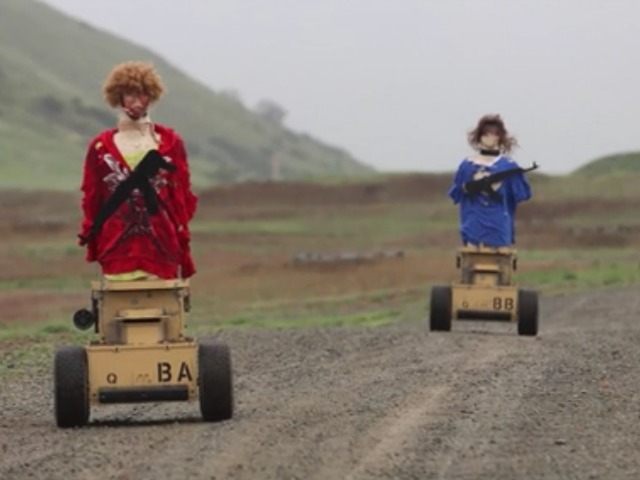At Camp Pendleton, Marines are testing a new, cutting edge form of live-fire training using robotic targets.
Stationary and on-rails targets are all well and good, but enemy combatants haven’t behaved like that since the formal battle lines of the Revolutionary War. It’s long past time for a training program that provides a more accurate simulation of today’s combat situations, and the Marines of Camp Pendleton are taking steps toward just that.
The “Autonomous Robotic Human Type Targets” sport wigs and zip around at up to 8 miles per hour on two wheels. Rather than simply popping up and down or riding along a prescribed track, these targets attempt to be as unpredictable and erratic as their real-life counterparts. They’ll change speeds, swerve, and respond to one another when hit. The robots will even advance on Marines in an aggressive response.
The Marines at Pendleton will “be engaging these targets at different distances with different weapons systems, running through all the pre-programmed drills so we can competently assess how we can use these targets in our training,” according to Staff Sgt. Matthew Muro, the chief instructor with Division Schools’ Urban Leaders Course.
The potential applications are endless. Staff Sgt. Muro proposed an urban combat scenario in which “Marines are walking through the town and see the target moving from one building to another, they would only have a few seconds to identify it, determine whether it’s a threat or not, and possibly engage it.”
He believes that the Marines themselves are the “subject matter experts” in this field, and their feedback has already been very promising. Snipers in particular liked the mobility of the targets, and the immediate feedback as to where their shots hit.
The robots are fully armored and can withstand round impacts up to a “.338 Lupua.” They can take thousands of shots without being destroyed, navigate via an internal GPS, and can sense and avoid obstacles up to 25 meters away with its built-in laser navigational system.
This all begs two very essential questions: First, how much more efficient can our armed forces be made with the ability to train them in realistic firing situations? Will this new regimen pave the way for better soldier accuracy and survivability?
Second, how sure are we that we want to train military robots to evade human gunfire and mount counter-offensives? Feels like we’re really going all-in on that dystopian robot apocalypse scenario.
Follow Nate Church @Get2Church on Twitter for the latest news in gaming and technology, and snarky opinions on both.

COMMENTS
Please let us know if you're having issues with commenting.